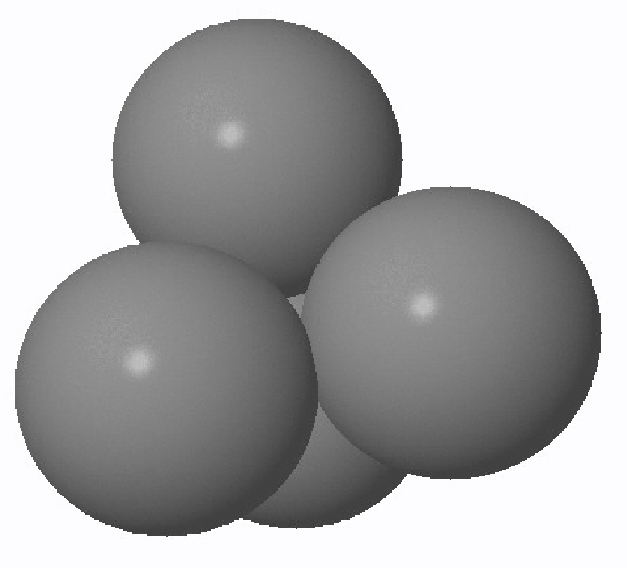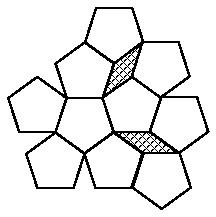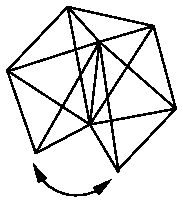 The aim of this project was to study aging in glasses by following the evolution of packing and geometry in a colloidal glass. Our group has already found that the dynamics of aging are heterogeneous in both time and space. Here we focus our confocal microscopes and our attention on some static properties of glasses. What follows is some background to help explain the motivation behind our approach. You can also get the papers for more detailed information.
The aim of this project was to study aging in glasses by following the evolution of packing and geometry in a colloidal glass. Our group has already found that the dynamics of aging are heterogeneous in both time and space. Here we focus our confocal microscopes and our attention on some static properties of glasses. What follows is some background to help explain the motivation behind our approach. You can also get the papers for more detailed information.
Colloidal suspensions are good model systems for atomic and molecular materials. For example we can easily obtain a colloidal crystal by simply increasing the packing fraction above Φc~49%. Once Φhcp~74% is reached, the colloids are hexagonally close-packed and no more colloids can be added to the container without deforming them. For a quasi-hard sphere system like ours, the main driving mechanism for crystallization is entropy maximization: by crystallizing, the colloids pack more efficiently thus sharing the available free volume more equitably. This in turn increases vibrational entropy and minimizes free energy (though it decreases configurational entropy somewhat too).
So it would seem that in hard sphere systems packing optimization is the prime directive, one that is always followed...
To explore packing in three dimensions one must consider at least four colloids (with three colloids you always only define a plane, with two a line and with one... a point!). When trying to pack these colloids as efficiently as possible one ends up with a tetrahedron such as the one shown at the top of the page. By doing so one can obtain a (local) packing fraction of Φtet~78%, well above Φhcp which is the highest packing fraction that can be achieved in bulk. Why the discrepancy? Why don't we find materials that crystallize using a tetrahedron as a fundamental unit cell?


It turns out that tetrahedra do not tile space in 3D (on the right) just like pentagons do not tile a 2D surface (on the left). The competition between the drive to optimize packing and the necessity to tile space can be thought of as a sort of geometric frustration. This frustration has been invoked as a possible cause for vitrification in atomic glasses (see references in papers) and is an attractive parallel to frustration in spin glasses.
With this project we studied the evolution of tetrahedral packing in an aging colloidal glass hoping to explain the latter in terms of the former.
 Our results can be summarized as follows:
Our results can be summarized as follows:
- Aging slows down the dynamics of the system: particles slow down with time.
Tetrahedral structure is somewhat related to dynamcis: in general, the looser and the more irregular a tetrahedron, the more mobile are the colloids that form it.
Yet surprisingly, the distribution of tetrahdedral structural characteristics does not age with time!
Some papers on this subject
You may be interested in reading our papers for a fuller discussion.
- "Correlations of structure and dynamics in an aging colloidal
glass"
GC Cianci, RE Courtland, and ER Weeks, Solid State Comm. 139, 599-604 (2006) - "Invariance of structure in an aging colloidal
glass"
GC Cianci, RE Courtland, and ER Weeks, AIP Conf. Proc. 832: Flow Dynamics: The Second International Conference on Flow Dynamics, eds. M Tokuyama & S Maruyama, pp. 21-25 (2006).
This work has been primarily funded by NASA (NAG3-2728).
For more information, please contact Eric Weeks: <weeks(at)physics.emory.edu>